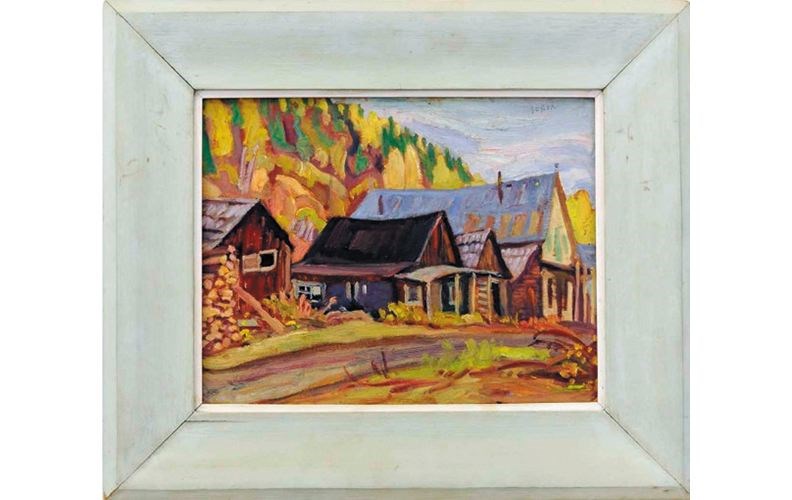Few Canadian painters are household names. Emily Carr comes to mind, as does Roy Henry Vickers, Tom Thomson, Robert Bateman, Norval Morrisseau or perhaps Jack Shadbolt.
The most famous of all, though, is not a single painter but a band of landscape artists who became known far and wide by their collective moniker, The Group of Seven.
Of those, the most singularly notable was A.Y. Jackson. His name is on not one but two high schools (Ottawa and Toronto), a stretch of highway in Ontario, and he was made a Companion of the Order of Canada.
Jackson was internationally famous as a war artist during the First World War, while his Group of Seven work helped illuminate Canadian wilderness areas like Algonquin Park and Georgian Bay.
He even created an image in the running to become the flag of Canada.
Barkerville Historic Town is now displaying an original A.Y. Jackson painting, which would be a prized piece in anyone's art collection but this one has an added treat. It isn't just in Barkerville, it is of Barkerville.
"The painting, which was the result of a sketching and painting trip Jackson made to the area in 1949 en route to Onward Ranch near 150 Mile House, is of three buildings at the south end of Barkerville," said James Douglas, Manager of Visitor Experiences for the Cariboo living museum.
"One of the buildings pictured, now called the Kwong Sang Wing store, still exists in Barkerville and can be visited daily."
In addition to the still-life of the decaying gold rush town, he also wrote about it and almost prophetically so. This is what he penned in his autobiography A.Y. Jackson, A Painter's Country.
"From Quesnel there is a lovely drive to Barkerville, the famous old mining town built at the time of the gold rush a hundred years ago. It must have been an exciting place in its day, but apart from the little church there is not much left of it now. The whole place should have been preserved as a memorial to the pioneers of British Columbia. There are still a few old timers who make a living washing for gold in the creeks."
The abandoned buildings were indeed preserved and the town was turned into a live-action physical document of that era in history.
The painting was almost lost from public view or perhaps a better description is the painting was almost not discovered for public view. It was framed inside a mystery story that navigated a hairpin turn of fate.
Art collector Peter Wright purchased a Jackson painting called Onward Ranch from the aforementioned Cariboo painting venture of 1949. Wright owned this rare painting for years. One day recently, his friend, an art curator named Paul Crawford, was admiring the painting and lifted it off the wall. Crawford has made a habit out of checking the backs of paintings due to there sometimes being additional works doubled up against canvases.
It's rare but it happens and it did in this case. On the back of Onward Ranch, Crawford spotted the telltale outline of another painting pressed against the main image. When he parted the two, he recognized the image immediately.
Crawford is a director on the board of Island Mountain Arts. His wife Julie Fowler is IMA's executive director. They have been residents of Wells for years.
The biggest cultural feature of Wells is Barkerville down the road and that's the place staring back at him from the paintbrush of a Canadian art legend.
Wright provided the painting for display at the historic town this year.
It will be a special feature during Canada's 150th anniversary of confederation. It is the first time the painting has ever been displayed publicly.



